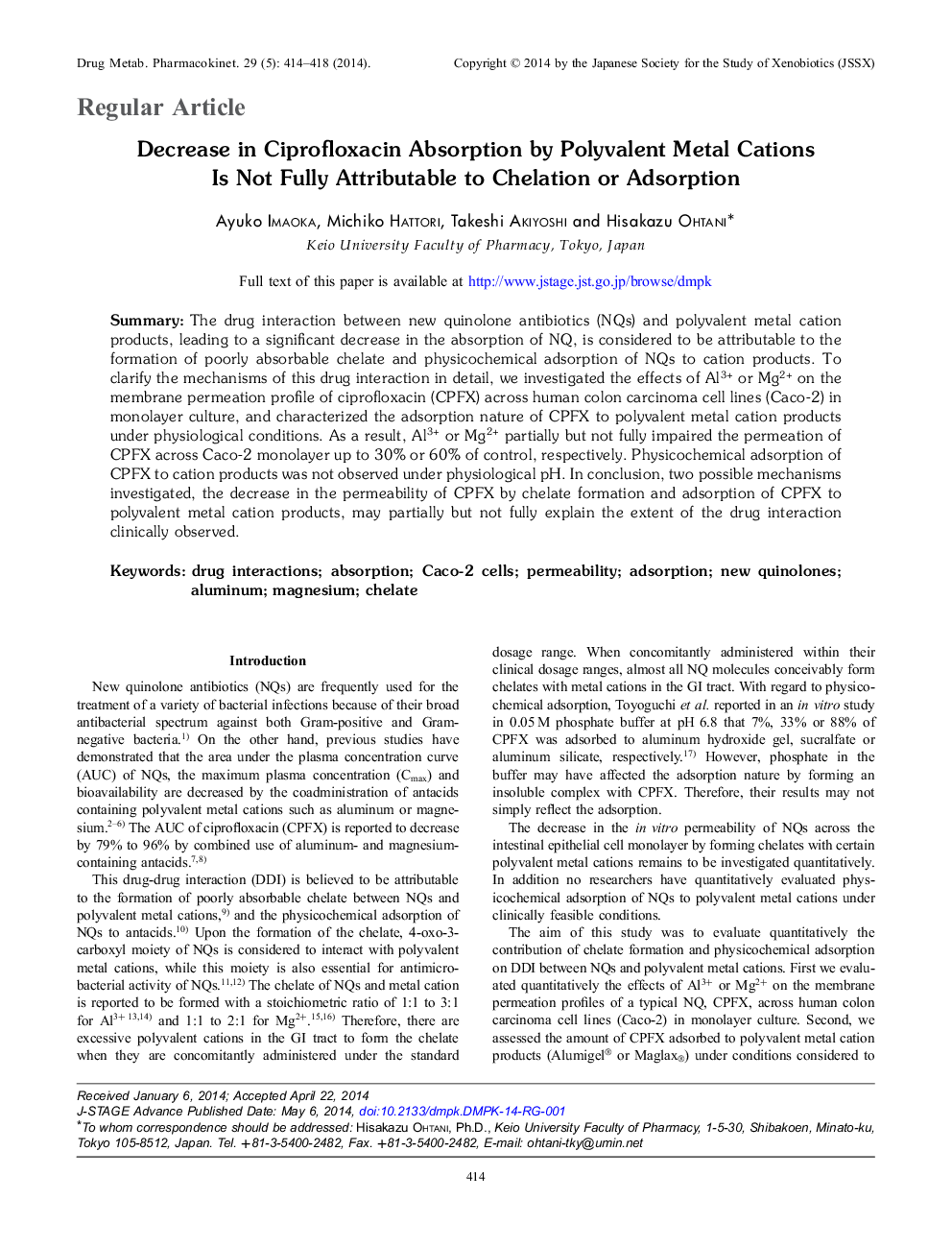| Article ID | Journal | Published Year | Pages | File Type |
|---|---|---|---|---|
| 2478798 | Drug Metabolism and Pharmacokinetics | 2014 | 5 Pages |
Summary:The drug interaction between new quinolone antibiotics (NQs) and polyvalent metal cation products, leading to a significant decrease in the absorption of NQ, is considered to be attributable to the formation of poorly absorbable chelate and physicochemical adsorption of NQs to cation products. To clarify the mechanisms of this drug interaction in detail, we investigated the effects of Al3 + or Mg2 + on the membrane permeation profile of ciprofloxacin (CPFX) across human colon carcinoma cell lines (Caco-2) in monolayer culture, and characterized the adsorption nature of CPFX to polyvalent metal cation products under physiological conditions. As a result, Al3 + or Mg2 + partially but not fully impaired the permeation of CPFX across Caco-2 monolayer up to 30% or 60% of control, respectively. Physicochemical adsorption of CPFX to cation products was not observed under physiological pH. In conclusion, two possible mechanisms investigated, the decrease in the permeability of CPFX by chelate formation and adsorption of CPFX to polyvalent metal cation products, may partially but not fully explain the extent of the drug interaction clinically observed.
